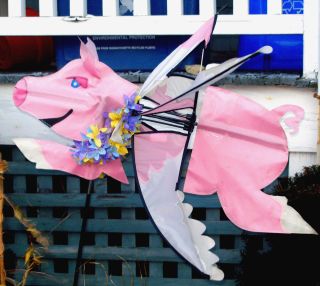April 27, 2009
Poor Pigs

The pandemic alert shot up to level 5, and David Kirby scooped all of us here at Dakota. We have been combing the internet all day hoping that someone in the mainstream press would connect the dots between the swine flu and the inhumane treatment of animals by the corporatocracy.
Charles Lemos writes in "Swine Capitalism" an article which deserves to be read in full:
The link is not between pork consumption and the virus; the link is between industrial pork production and the virus. As Mike Davis concludes we face a planetary catastrophe due to "industrialized and ecologically unhinged livestock production" based on a swine capitalism.
From the new blog prophetically named Farming Pathogens,"The Agro Industrial Roots of Swine Flu H1N1"
.... On the other hand, the conditions for supporting such strains appear best represented in industrial animals. Otte et al. (2007) tabulated outbreaks on industrial and smaller farms for two recent outbreaks of highly pathogenic influenza. In British Columbia, 5% of the province’s large farms hosted H7N3 infections in 2004, while 2% of its small farms hosted outbreaks. In the Netherlands, 17% of industrial farms hosted H7N7 outbreaks in 2003, while 0.1% of backyard farms hosted clusters.Even if these and other such influenza strains first developed on small holdings, industrial livestock appear ideal populations for supporting virulent pathogens. Growing genetic monocultures removes whatever immune firebreaks may be available to slow down transmission. Larger population sizes and densities facilitate greater rates of transmission. Such crowded conditions depress immune response. High turnover, a part of any industrial production, provides a continually renewed supply of susceptibles, the fuel for the evolution of virulence.
There are additional pressures on influenza virulence on such farms. As soon as industrial livestock reach the right bulk they are killed. Resident influenza infections must reach their transmission threshold quickly in any given animal, before it is sacrificed. The quicker viruses are produced, the greater the damage to the animal. Increasing age-specific mortality in industrial livestock should select for greater virulence. With innovations in production, the age at which chickens, for one, are processed has been reduced from 60 days to 40 days, increasing pressure on viruses to reach their transmission threshold—and virulence load— that much faster.
Never fear this morning Smithfield, the pork magnate, made the following claim.
The company said both its Mexican business units regularly administer flu vaccinations to its hogs and conduct monthly tests for the presence of the illness, which has been blamed for more than 149 deaths and likely sickened up to 1,600 in Mexico since April 13.
How reassuring, agribusiness has this flu vaccine thing downpat -- so much better than our own medical researchers who predict that it will take six months to develop a vaccine -- and just think of the inconvenience of delivering a vaccination to each and every one of those distressed squirmy hogs. Agribusiness is so dedicated to our health..
Swine flu may be the least of the problems in the corporate pigpen. Nikolas Kristof has been following pigs in the New York Times. From"Pathogens In Our Pork":
These dangerous pathogens are now even in our food supply. Five out of 90 samples of retail pork in Louisiana tested positive for MRSA — an antibiotic-resistant staph infection — according to a peer-reviewed study published in Applied and Environmental Microbiology last year. And a recent study of retail meats in the Washington, D.C., area found MRSA in one pork sample, out of 300, according to Jianghong Meng, the University of Maryland scholar who conducted the study.Regardless of whether the bacteria came from the pigs or from humans who handled the meat, the results should sound an alarm bell, for MRSA already kills more than 18,000 Americans annually, more than AIDS does.
MRSA (pronounced “mersa”) stands for methicillin-resistant Staphylococcus aureus. People often get it from hospitals, but as I wrote in my last column, a new strain called ST398 is emerging and seems to find a reservoir in modern hog farms. Research by Peter Davies of the University of Minnesota suggests that 25 percent to 39 percent of American hogs carry MRSA.
Public health experts worry that pigs could pass on the infection by direct contact with their handlers, through their wastes leaking into ground water (one study has already found antibiotic-resistant bacteria entering ground water from hog farms), or through their meat, though there has been no proven case of someone getting it from eating pork. Thorough cooking will kill the bacteria, but people often use the same knife to cut raw meat and then to chop vegetables. Or they plop a pork chop on a plate, cook it and then contaminate it by putting it back on the original plate.
Yet the central problem here isn’t pigs, it’s humans. Unlike Europe and even South Korea, the United States still bows to agribusiness interests by permitting the nontherapeutic use of antibiotics in animal feed. That’s unconscionable.
The peer-reviewed Medical Clinics of North America concluded last year that antibiotics in livestock feed were “a major component” in the rise in antibiotic resistance. The article said that more antibiotics were fed to animals in North Carolina alone than were administered to the nation’s entire human population.
“We don’t give antibiotics to healthy humans,” said Robert Martin, who led a Pew Commission on industrial farming that examined antibiotic use. “So why give them to healthy animals just so we can keep them in crowded and unsanitary conditions?”
Of course conservatives are taking the opportunity to blame the swine flu on immigrants and democrats. Deregulation probably has nothing to do with this crisis either. It must be all those Mexican agribusiness workers hopping aboard international flights.
Photo note: a metaphorophoto
Posted by Dakota at April 27, 2009 12:24 PM